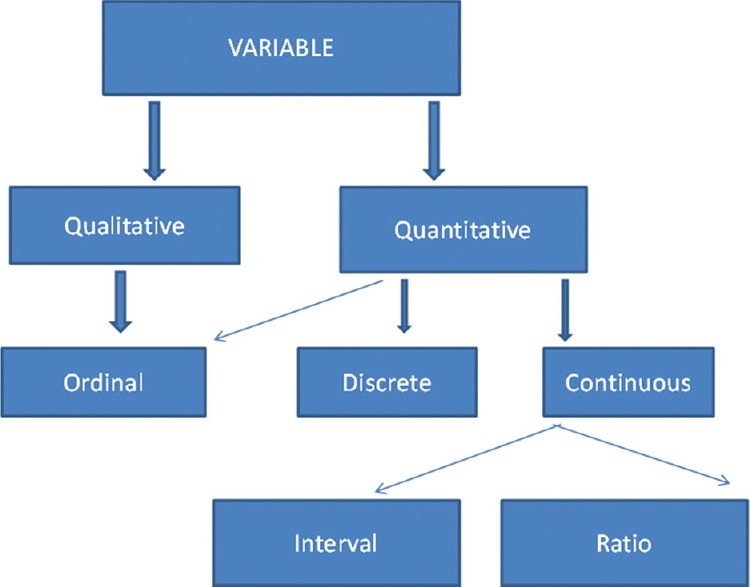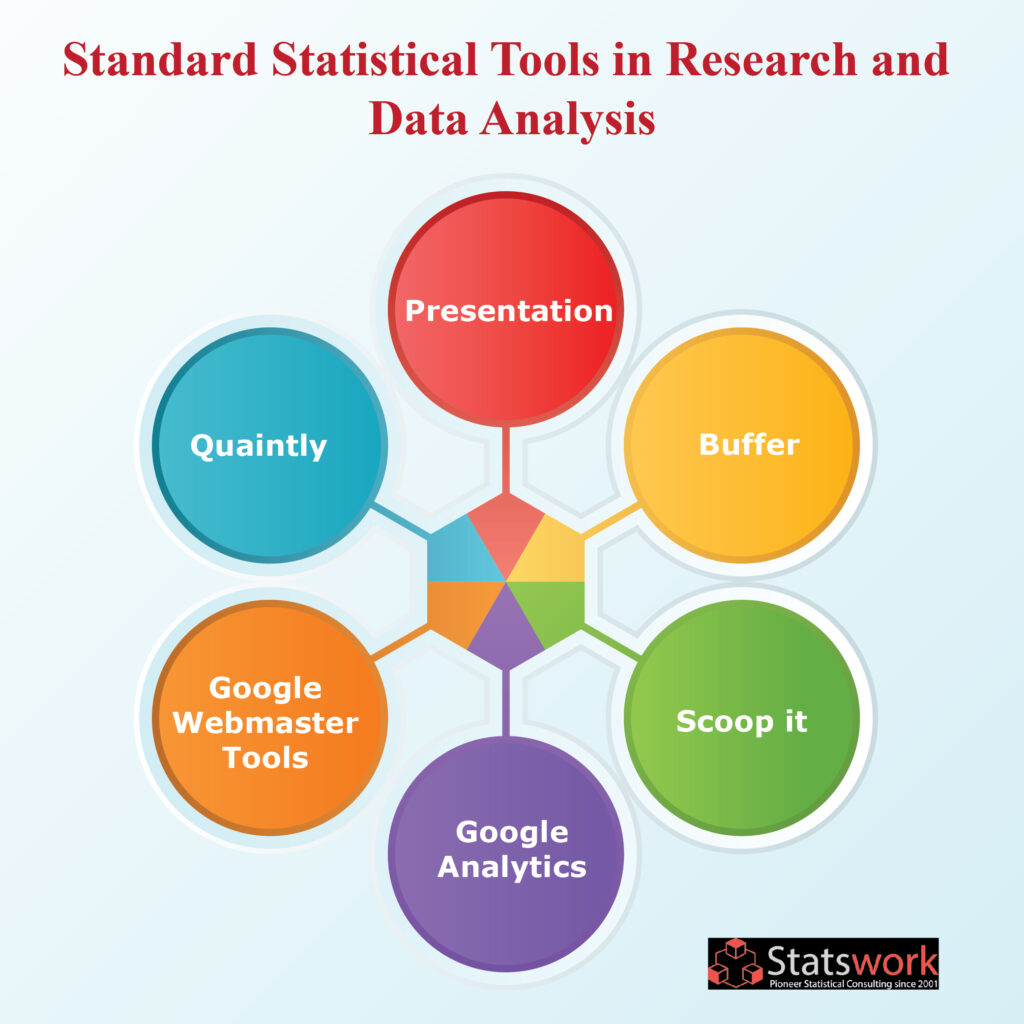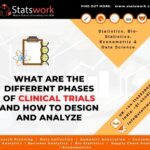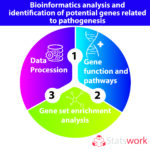Standard statistical tools in research and data analysis
Introduction
Statistics is a field of science concerned with gathering, organising, analysing, and extrapolating data from samples to the entire population. This necessitates a well-designed study, a well-chosen study sample, and a proper statistical test selection. A good understanding of statistics is required to design epidemiological research or a clinical trial. Improper statistical approaches might lead to erroneous findings and unethical behaviour.
VARIABLES
A variable is a trait that differs from one person to the next within a population. Quantitative variables are measured by a scale and provide quantitative information, such as height and weight. Qualitative factors, such as sex and eye colour, provide qualitative information (Figure 1).

Figure 1. Classification of variables [1]
Quantitative variables
Discrete and continuous measures are used to split quantitative or numerical data. Continuous data can take on any value, whereas discrete numerical data is stored as a whole number such as 0, 1, 2, 3,… (integer). Discrete data is made up of countable observations, while continuous data is made up of measurable observations. Discrete data examples include the number of respiratory arrest episodes or re-intubation in an intensive care unit. Continuous data includes serial serum glucose levels, partial pressure of oxygen in arterial blood, and oesophageal temperature. A hierarchical scale with increasing precision can be used based on category, ordinal, interval and ratio scales (Figure 1).
STATISTICS
Descriptive statistics try to explain how variables in a sample or population are related. The mean, median, and mode forms, descriptive statistics give an overview of data. Inferential statistics use a random sample of data from that group to characterise and infer about a community as a whole. It’s useful when it’s not possible to investigate every single person in a group.

Descriptive statistics
The central tendency describes how observations cluster about a centre point, whereas the degree of dispersion describes the spread towards the extremes.
Inferential statistics
In inferential statistics, data from a sample is analysed to conclude the entire population. The goal is to prove or disprove the theories. A hypothesis is a suggested explanation for a phenomenon (plural hypotheses). Hypothesis testing is essential to process for making logical choices regarding observed effects’ veracity.
SOFTWARES FOR STATISTICS, SAMPLE SIZE CALCULATION AND POWER ANALYSIS
There are several statistical software packages accessible today. The most commonly used software systems are Statistical Package for the Social Sciences (SPSS – manufactured by IBM corporation), Statistical Analysis System (SAS – developed by SAS Institute North Carolina, Minitab (developed by Minitab Inc), United States of America), R (designed by Ross Ihaka and Robert Gentleman from the R core team), Stata (developed by StataCorp), and MS Excel. There are several websites linked to statistical power studies. Here are a few examples:
- StatPages.net – contains connections to a variety of online power calculators.
- G-Power — a downloadable power analysis software that works on DOS.
- ANOVA power analysis creates an interactive webpage that estimates the power or sample size required to achieve a specified power for one effect in a factorial ANOVA design.
- Sample Power is software created by SPSS. It generates a comprehensive report on the computer screen that may be copied and pasted into another document.
SUMMARY
A researcher must be familiar with the most important statistical approaches for doing research. This will aid in the implementation of a well-designed study that yields accurate and valid data. Incorrect statistical approaches can result in erroneous findings, mistakes, and reduced paper’s importance. Poor statistics can lead to poor research, which can lead to immoral behaviour. As a result, proper statistical understanding and the right application of statistical tests are essential. A thorough understanding of fundamental statistical methods will go a long way toward enhancing study designs and creating high-quality medical research that may be used to develop evidence-based guidelines.
References
[1] Ali, Zulfiqar, and S Bala Bhaskar. “Basic statistical tools in research and data analysis.” Indian journal of anaesthesia vol. 60,9 (2016): 662-669. doi:10.4103/0019-5049.190623
[2] Ali, Zulfiqar, and S Bala Bhaskar. “Basic statistical tools in research and data analysis.” Indian journal of anaesthesia vol. 60,9 (2016): 662-669. doi:10.4103/0019-5049.190623



 Previous Post
Previous Post Next Post
Next Post